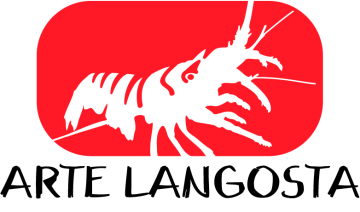Sustainable Fisheries in the Galera-San Francisco Marine Reserve
Context
Challenges addressed
- Diminishing fish resources
- Deterioration of marine ecosystems
- Defective management and control of the execution of regulations and of the quality of the catches
- Low coordination between the local fishers
- No data about the most important fish stocks
- Strong but inequilibrated interdependence of traders and fishers
- Restaurants and fish-stores without transparency and support for sustainability
Location
Process
Summary of the process
Building Blocks
Participatory fisheries monitoring
A community-based catch-monitoring programme is designed to document the quantities of fish and lobster harvested in the area. This type of data creates (and constantly updates) a reference point, meeting the information requirements of decision-makers and managers of the marine reserve.
Enabling factors
- The support of the Instituto Nazca de Investigaciones Marinas with the financial collaboration of Conservation International to establish a monitoring system and the analysis of the information derived.
- Authorities willing to include the information of the monitoring into decision making and continuous and up-to-date information of the monitoring database.
- Participation of the fishermen in generating and sharing information on their catches.
Lesson learned
It is important to have technical support for a long-term monitoring process to establish a continuous monitoring system. This means, not only including and analysing new Information on fisheries but also communicating information and results back to the commnunities to suppport the empowerment and ownership of the fishermen in this process. It is important that the actual resource users are involved in the process and understand their contributions to the fishing monitoring results.
Low impact fishing activities
A conservation agreement promotes the application of fisheries and zoning regulations in the marine reserve as well as the implementation of guidelines based on the FAO Code of Conduct for Responsible Fisheries.
Enabling factors
- National and international NGOs as well as governmental entities have provided the funding for the initial phase as well as for implementation.
- The technical support of public and private partners has been important during all phases of the development
- The support of control and administration authorities is a precondition for the success of the project.
Lesson learned
This is an initiative which has been developed over a period of about five years with encountering some difficulties along the way. It was a long process which required patience and persistence before seeing differences in fishing behaviour. The biggest challenge was in working with a group of people who did not see the benefit for being organized in a union and who are used to certain extraction techniques having a free access to the resources without any kind of regulation. This initiative shows how projects working on behavioural changes and the raising awareness for more environmentally friendly uses, can take several years and need to consider the different rhythm and philosophy of the stakeholders involved and ensure their responsibility and commitment in decision-making in this process.
Economic incentives
Fishermen who desire to engage in activities with low environmental impact are provided non-destructive, selective gear which reduces the catch of non-target species or undersized fish. Training on product handling and eco labelling schemes help fishermen to assure high quality products, access to markets for sustainably harvested resources and thus better prices for their products.
Enabling factors
- Initial funding by an intenrational NGO for the conservation agreement
- Commitment of the fisherfolk to ensure the meet of the conservation agreement
- Constant support of enforcement by administration authorities together with the fishermen
- Technical support working directly with the fishermen in advising the management of the fisheries and building capacities
- A product that correspons to the demand of the market and a market that corresponds to the total volume of catches
Lesson learned
To maintain economic incentives is very expensive and in the long term not very sustainable. Economic agreements can be a very good strategy to engage a group of people quickly in conservation actions and, as happened in this case, result in the recovery of an overexploited population auch as the spiny lobster. For the success of the agreement it is essential to establish a monitoring system, conduct trainings and support the stakeholders involved in order to ensure that once the agreement has ended the fishermen are not falling back to their old behaviour. Currently, the direct sale and the higher prices they receive for the environmentally responsible products are the primary incentive for adapting sustainability and conservation measures. This agreement ran for two years in which a recovery of the population and an increase in size of the spiny lobster at the Cape of San Francisco was determined.
Impacts
Beneficiaries
- Artisanal fishers' association
- Reserve managers responsible for enforcement
- The entire national reserve system

